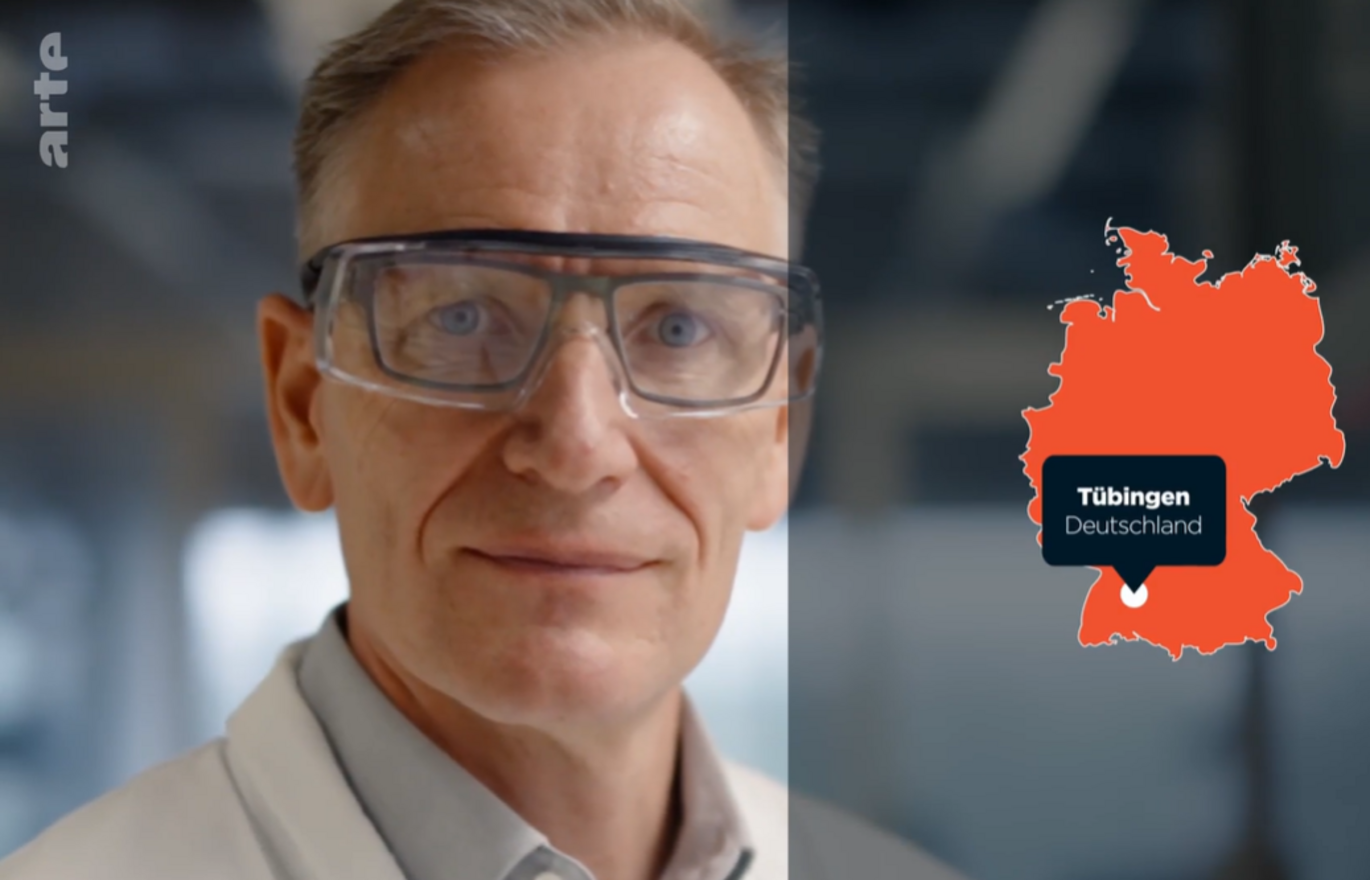How store wind power with the help from microbes
Microbes. These tiny little organisms have the potential of solving one of our biggest problems: storing renewable energy. Hydrogen generated by wind power is fed to the microbes, which bind CO₂ and produce methane, which can then be used for biogas. A big step towards independence from fossil fuels and a secure supply. Watch CORC-PI Lars Angenent explain this on German TV.

Our energy supply is dirty, expensive and brings us into fatal dependencies. The exploding oil and gas prices have further incentivised that energy generation must look different in the future. Microbiologist and bioengineer Lars Angenent is convinced that opportunities can also arise from crises. He’s a professor at the University of Tübingen and a CORC-PI specializing in microbes.
The Dutch scientist feels at home in the lab, but still works with windpower, researching how to store wind power. For a feature on the German TV channel ZDF's documentary series Plan B that shows that there is another way, he explains about his research and what he does to contributing to mitigating climate change. Here's a recap.
Small and complex solution
“We have to move faster now than we've ever done before. We have the technology, I think, to do something different,” Lars Angenent says about the technology his research focuses on.
The microbiologist's solution is notably small and complex. Not least in its pronunciation.
“These microbes have an incredibly difficult name. And it took me years to pronounce it Methanothermobacter thermautotrophicus. But we call it just MT. And as a population, they can make methane. And methane is renewable natural gas. So, we can actually make natural gas in our bioreactors and these tiny, tiny creatures and little factories can do it,” he explains.
These tiny organisms are the answer to the huge challenges of the future. Water is broken down into hydrogen and oxygen using the energy generated by wind power. This is called electrolysis. The hydrogen is then mixed with CO2, a harmful greenhouse gas, and fed to the microbes, which then produce methane. This sustainable biogas produced by the microbes can easily be injected into the gas network and then used for cooking and heating.
A win-win-situation
“When we started initially we said ‘we want to make methane!’ Everybody thought we were crazy because the methane price was so cheap and that was fracking. So, by fracking, you can get this gas really cheap. So, like, what are you guys doing? You're crazy. But of course, that's not renewable. That's just like fossil fuel natural gas. That's not what we wanted. If we really want to do it, we can. The technology's ready, but we need to step up. We need to do it much faster,” Lars Angenent recalls.
These technologies are available and have been for many years. This is how industrial waste products can be used to produce new usable substances such as biogas, with the help of microbes. CO2 is problematic, but here it is part of the solution.
“The thing with CO2 is we can’t smell it and we can’t see it. So we cannot tell the people on TV, look up and you see the problem with CO2. You don't see anything. You don't smell anything. But there is enormous amount of CO2 that we have put into the atmosphere. But you can’t see it. And so how can you tell people that there is a problem? Maybe only because you feel it right now there is actually a climate change and we're changing our climate, which we can feel, but we still don't know the sheer amount of CO2 that we put into the atmosphere. And that's really difficult to explain to people how much we have actually added there and how difficult it is to remove some of that out of the atmosphere again,” says Lars Angenent.
Watch the show here:
Potential of becoming a game-changer
The microbiologist has long since proven that it is not just a laboratory idea, as he has also implemented in a system that does exactly that: store electricity from wind. A living and sustainable battery. This means that greenhouse gases, for example from a factory chimney, can be used directly in a bioreactor as a building block for methane production.
“It´s a big advantage of a biological system like this system. The microbes are very good at being able to switch on and off, which is ideal for if you have stranded power, if you have power that, the sun is shining, the wind is blowing, like a day today. You know when there’s that moment, there’s too much power and you switch on everything and very quickly you can start making methane and put it back into the natural gas grid.
This means that wind energy peaks can be used wisely and stored. Technologies that have been mocked for years turn out to potentially becoming game-changers if implemented decisively, especially in times of crisis like these.
In Tübingen, the microbiologist is also putting into practice what he expects from a sustainable society.
“I obviously want to save the world. Right? So, I want to make sure that we become sustainable, that our societies create their own and produce their own energy. And we have to make choices. And those are difficult to be taken, but everybody has to take to play a little bit of a role there. So, we have to do it together. We can only do it as an entire society,” Lars Angenent ends.
